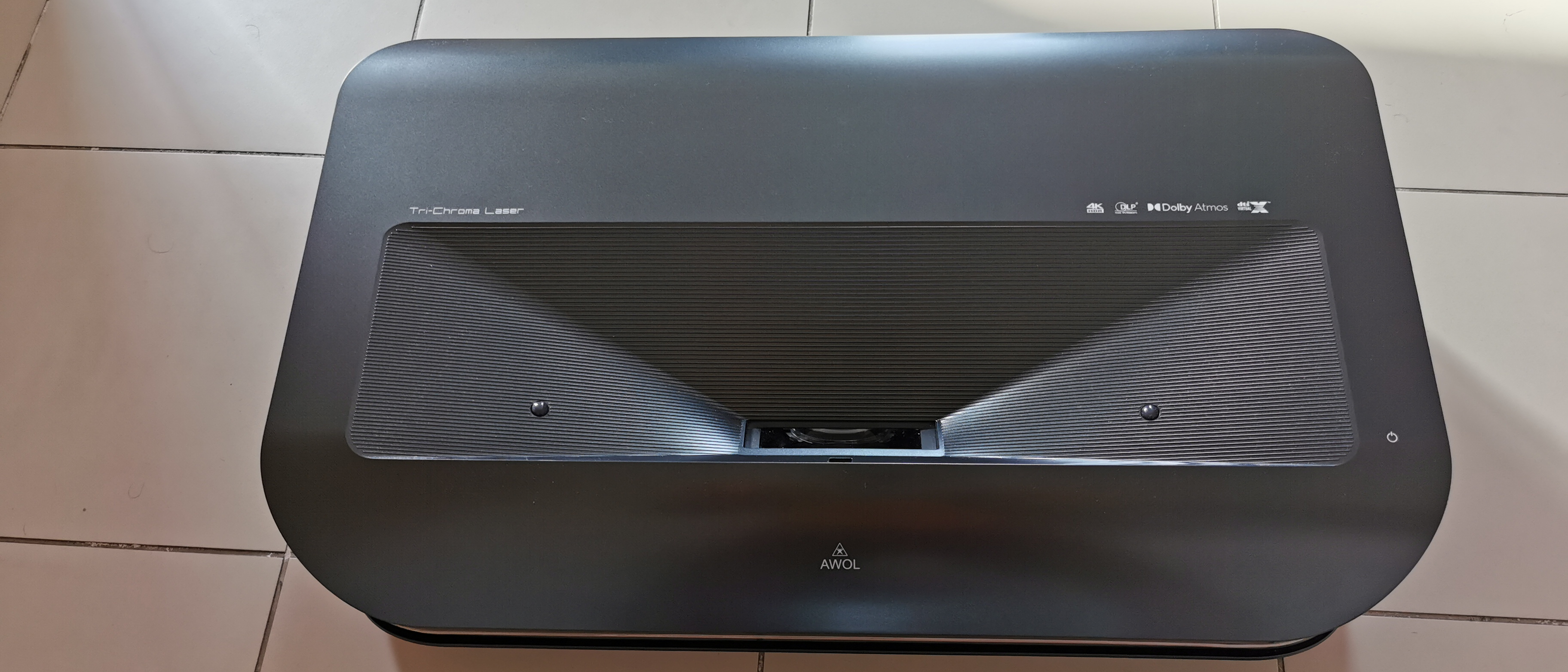TechRadar Verdict
The Awol LTV-3500 is a surprisingly capable projector, with bright colors and sharp images. Its drawback is its software, which can cause issues with certain video sources, as well as the difficulties with screen mirroring and lack of automatic keystone correction.
Pros
- +
Excellent projection quality
- +
Concealed streaming compartment
- +
Extremely bright
Cons
- -
No auto keystone
- -
Cumbersome mirroring
- -
No 3D support - yet
Why you can trust TechRadar
One-minute review
Projectors are slowly becoming a feature in homes, especially for those who want that at-home cinema experience no matter what they’re watching. The Awol LTV-3500 is a special projector to look at, simply because it delivers some great visuals for a brand that has barely even launched.
The model we’re looking at is the LTV-3500, which is the top of the line model from the company’s range. There’s a lot here to like – the projector puts out a staggering 3500 lumens of brightness, enough to make for a very visible picture even in a well-light room during the daytime. It’s capable of 4K resolution with a projection size of up to 120 inches, and can also be equipped with the company’s projection screens for an even sharper image. It’s also one of the few projectors that has impressive picture and color output right out of the box.
HDR, eARC, Dolby Atmos, and DTS Virtual X support add to the impressive list of what this projector can do, so there’s certainly plenty of tech here that can keep you glued to your seat as you enjoy your very own private home cinema experience. However, there are still some elements of the LTV-3500 that need to be worked on in order for it to be a truly world-class device, which hopefully can be rectified with future firmware updates.
Price and availability
The Awol LTV-3500 is available now via their Indiegogo campaign. The company already has a manufacturer in place to produce the units, so the crowdfunding is being used to drum up attention for the brand and also offer backers a significant discount on the unit’s retail price.
Awol’s website lists the LTV-3500 as being priced at $5,999, however it’s currently being listed for $3,299 for a limited time via the campaign. That’s more expensive than the Vava 4K laser projector priced at $2,799 but cheaper than Samsung’s Premiere LSP9T which comes in at a staggering $6,499. It’s still a hefty investment to make, and this is before you start to look at adding on the optional projection screen (starting from $699) or the stylish projection cabinet (starting from $2,200).
Design and features
The LTV-3500 comes in one color, which is a matte black. Most of the projector’s body is made of plastic, with a slim silver accent cutting through the middle of the projector’s body.
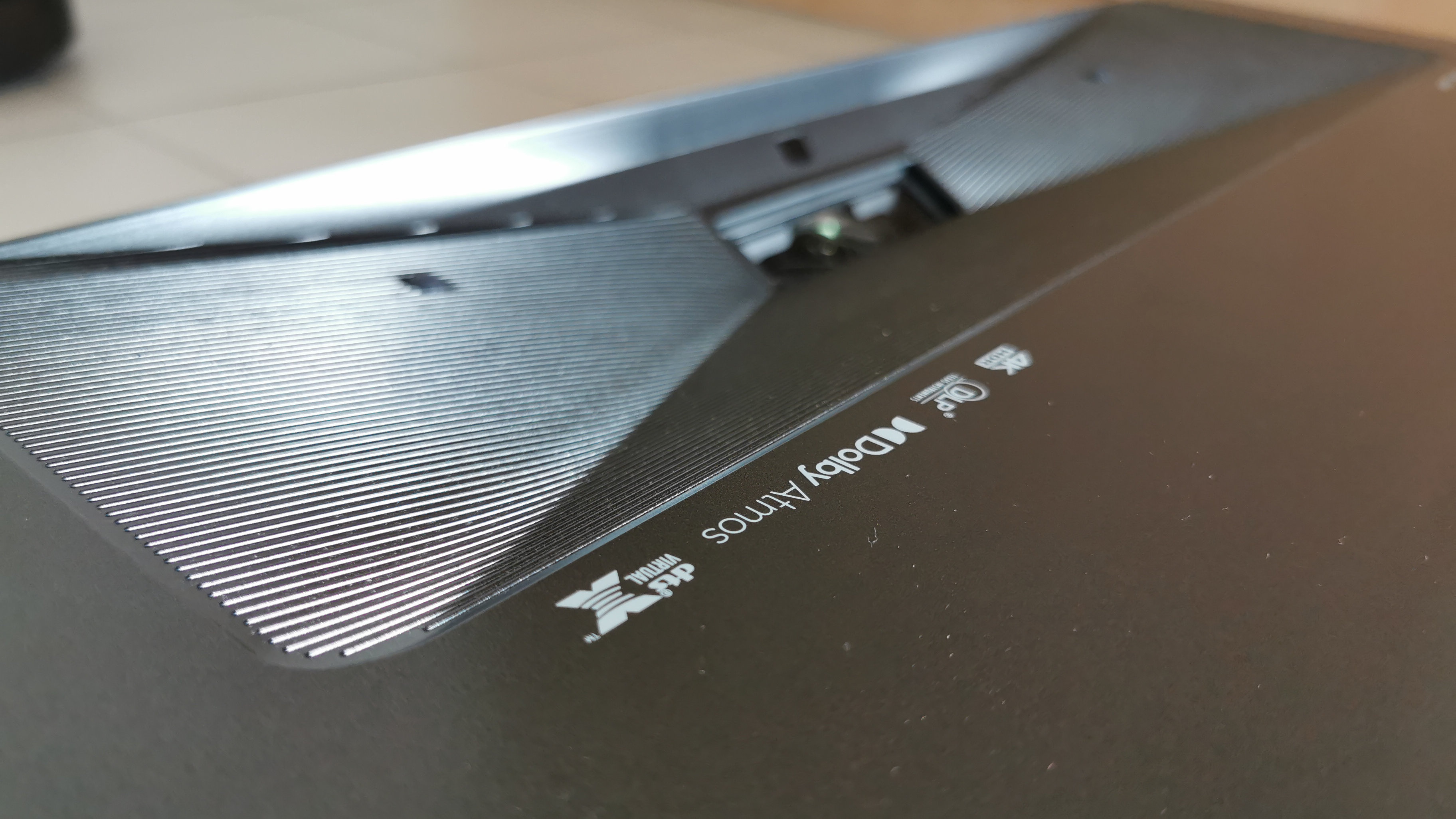
At the top you have a small touch button for power, as well as the projection lens and sensors that will automatically turn off the projection image if it detects any object coming near it – this is a common safety precaution to prevent kids or pets accidentally looking directly into the projector lens. The sides have a diamond pattern used for ventilation, and you’ll find the same towards the bottom and front of the projector which also help to output sound effectively.
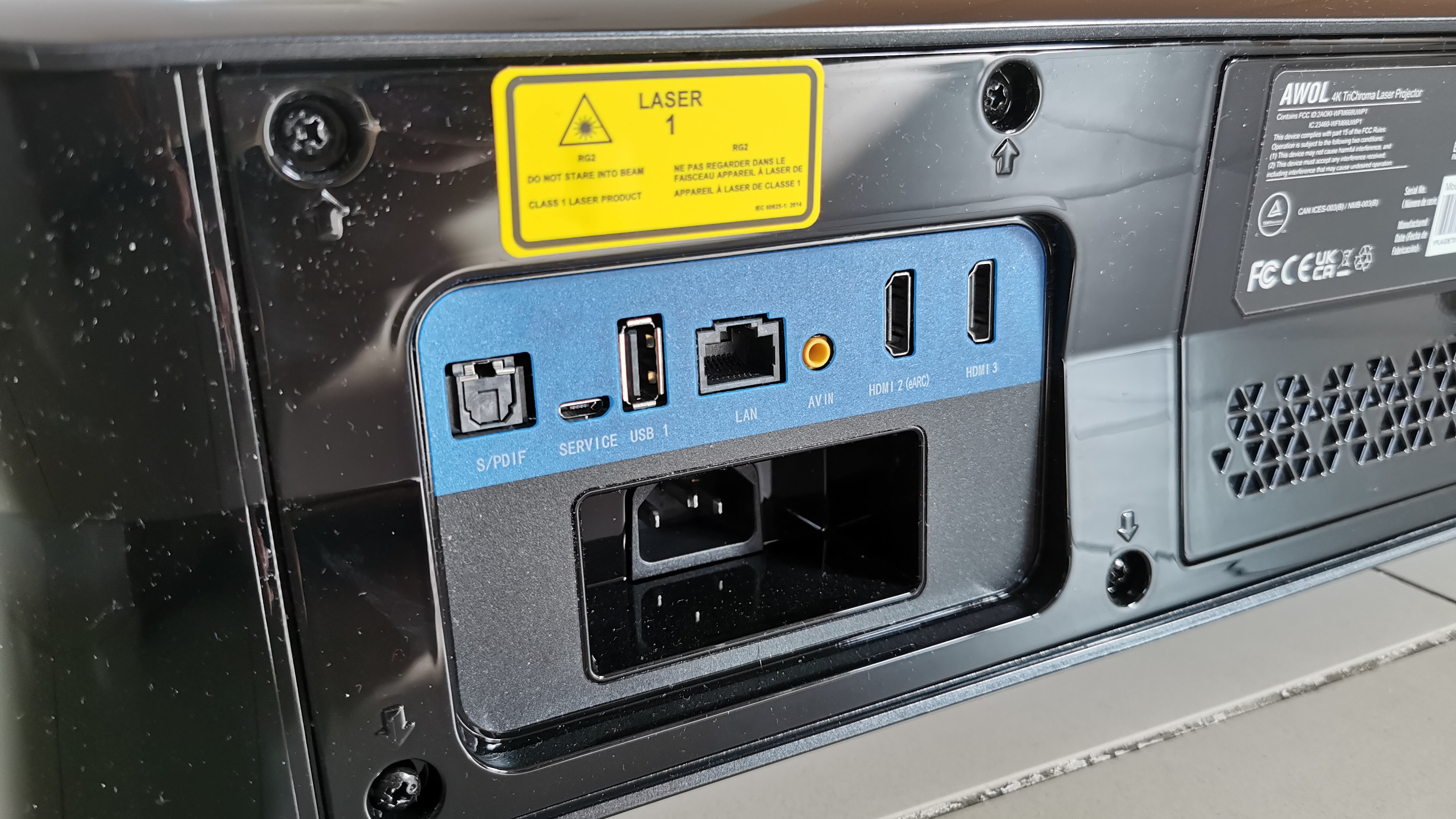
For connectivity, you’ll find the necessary ports at the back, which keeps the rest of the projector free from messy cables. There are three HDMI ports, Ethernet, Optical out, and a composite input. You also have WiFi 802.11ac support and Bluetooth connectivity, along with two USB 2.0 ports.
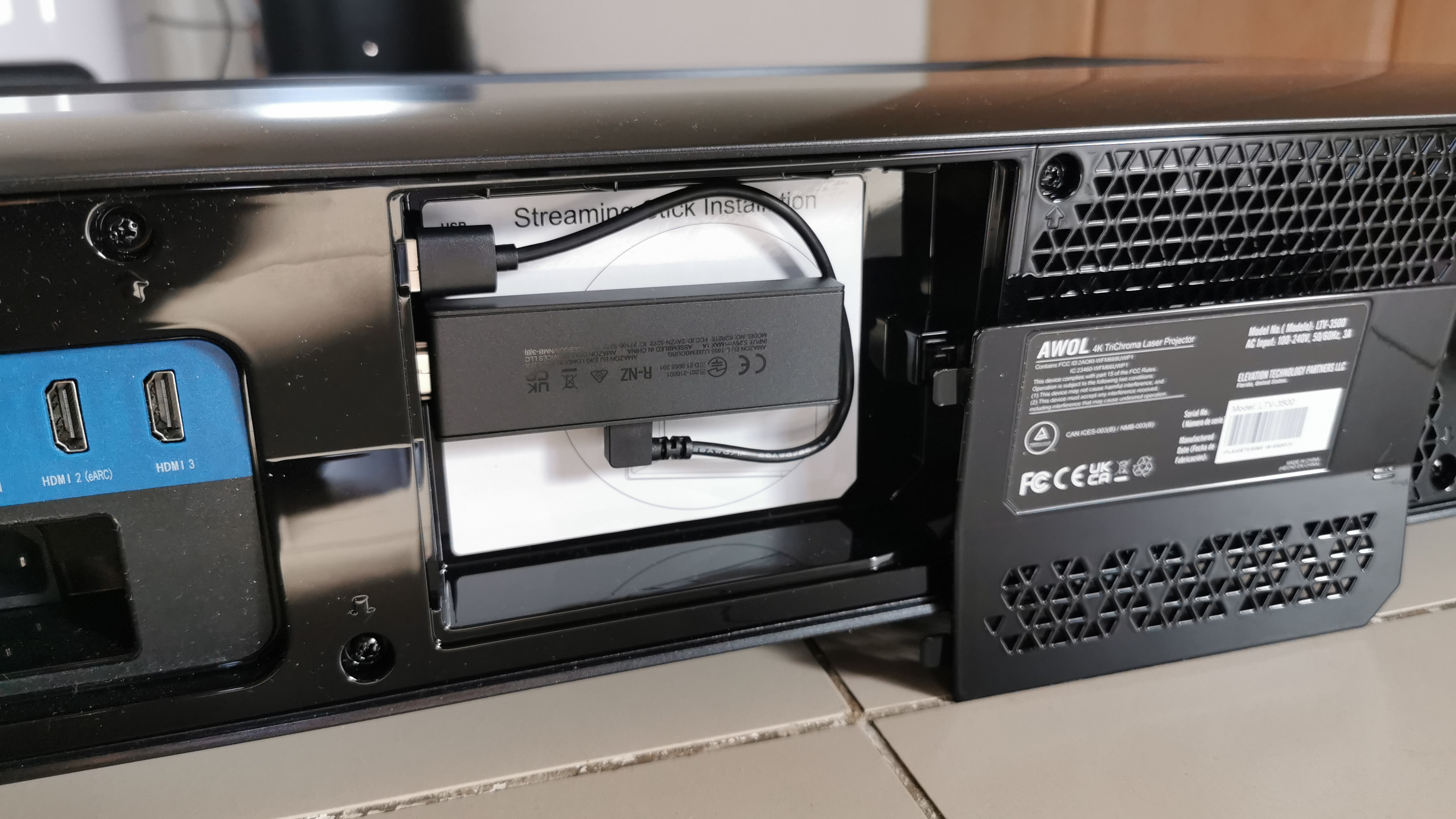
A nice feature about the LTV-3500 is that one of the HDMI ports is actually hidden inside a separate compartment at the back, which is large enough to house a streaming stick such as an Amazon Fire TV. There’s also a USB port included in the compartment, complete with a short charging cable to power your streaming stick of choice. Even though the device is concealed, there were no issues using a remote to control it. Larger streaming devices such as a Google Chromecast might be difficult to fit in here, and will have to use one of the regular HDMI ports instead.
The LTV-3500 is a short-throw projector, which means that you don’t need to keep it very far from your projection surface in order to get a massive screen. Optionally, it can also be ceiling mounted as well, but we’d think twice about this since the projector itself weighs nearly 12kg. There are also adjustable feet that can be used to straighten the projected image when placed on slightly uneven surfaces.
Powering the LTV-3500 is Texas Instrument’s 0.47” 4k UHD DMD, paired with a tri-color pure laser that’s got over 25,000 hours of projection time. While impressive, there is one drawback – this chip is only capable of running 4k at 60Hz, which is also why the HDMI ports on the LTV-3500 are version 2.0b only, not 2.1. If you’re a 3D enthusiast who enjoys 3D movies at home, this projector unfortunately doesn’t currently support 3D sources. Dolby Vision is also not available on the projector, but Awol have said that these features are currently being worked on and hope to be released in the summer later this year.
Software
The LTV-3500 runs Android 9.0, with 128GB of onboard storage. But it’s not Android TV, so you don’t have access to the slick Android interface or Google services. Instead, you get a very basic interface for changing sources, tinkering with settings, and a few scarce apps that let you browse the internal storage and open web pages. We tried installing an apk file for Netflix which worked, but when we fired up the app it didn’t recognize the projector’s remote control, so we couldn’t do anything else. The built-in file manager will let you view videos, music, and photos directly off a USB drive, which is a useful feature to have if you happen to be without internet.
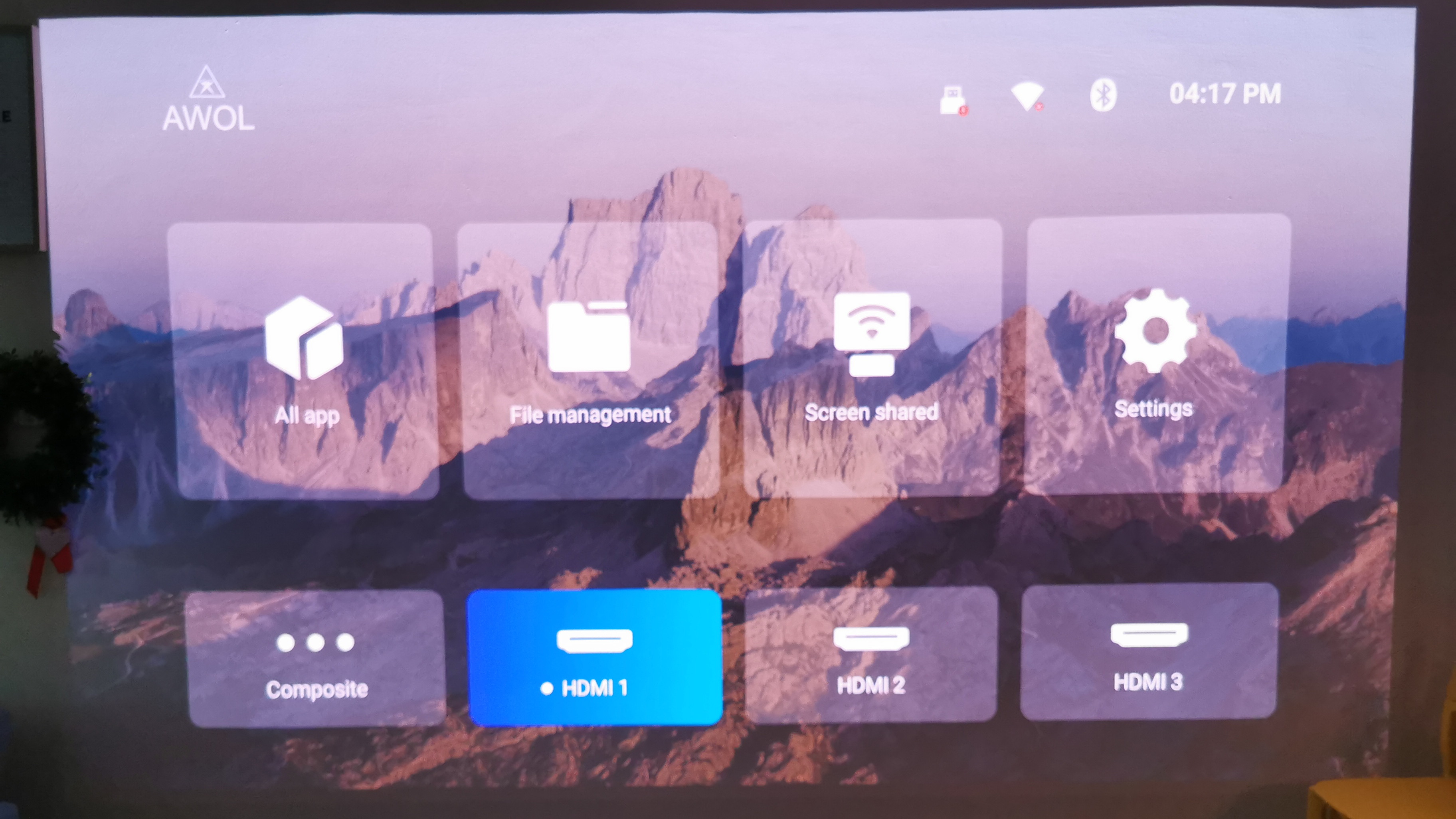
But since this isn’t Android TV, you’re going to immediately want to connect some other streaming device or laptop to this projector in order to get the best out of it. It just makes it easier to navigate and update apps automatically than trying to do it natively on the LTV-3500.
To properly align your images, the LTV-3500 does offer keystone correction, but it’s not automatic. You can drag each corner of a rectangle to align it to your projection surface, and the image will then be corrected. It’s slightly cumbersome, and coupled with manually adjusting the projector’s feet, it can take a bit of time to align the image every time you move the projector around. There’s also an internal motorized focus wheel that lets you sharpen the image as best as possible, but it would have been a bonus if either of these features was automatically handled by the projector.
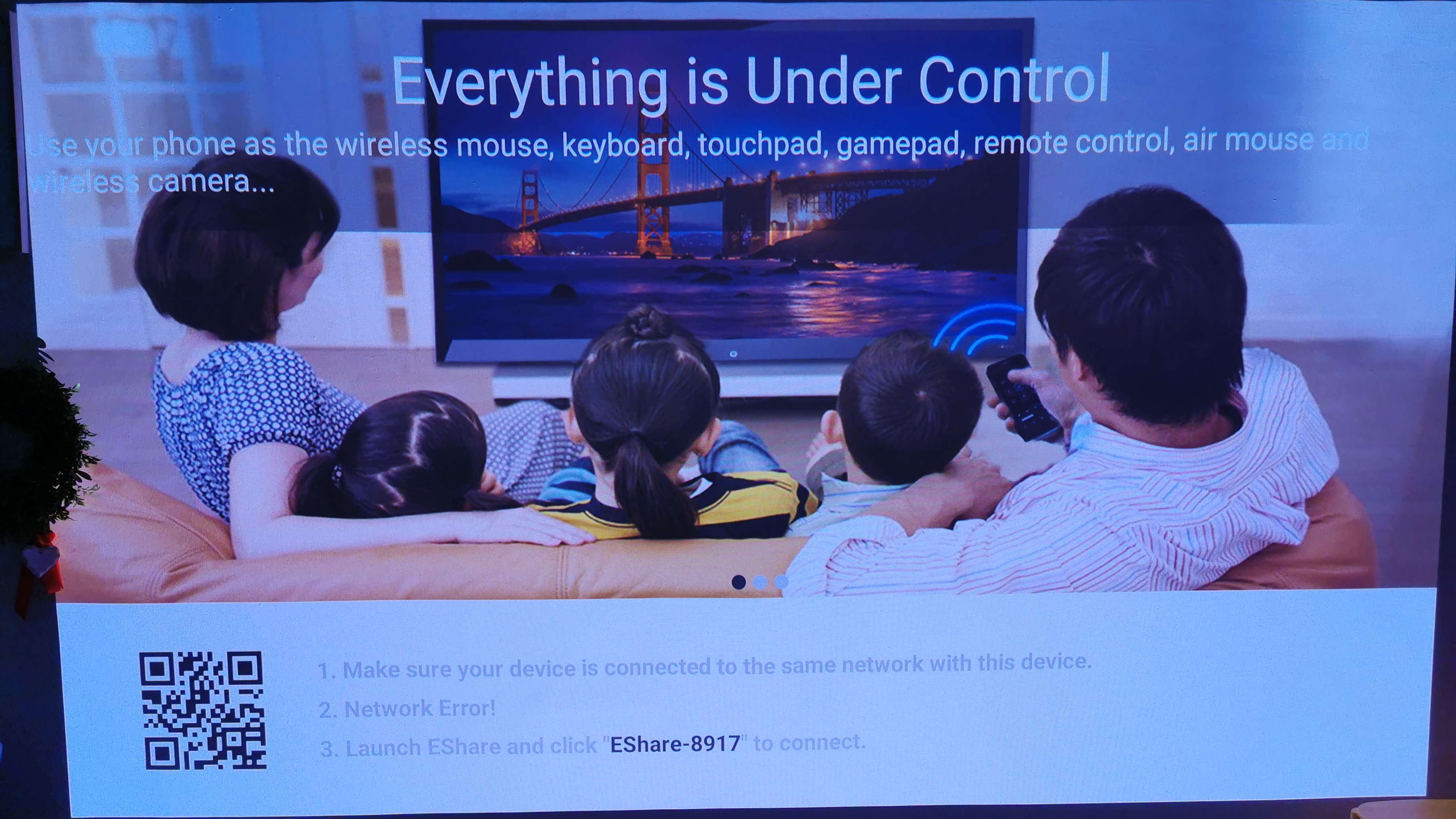
A stumbling block for the LTV-3500’s software is with screen mirroring. Even though it’s running Android, you can’t natively mirror your Android phone to the LTV-3500. Instead, you have to download a mirroring app to your Android or iOS device, which will then connect to your projector and mirror your device’s screen and audio. It’s long-winded, drains your battery quickly, and is slower to set up than just using an HDMI dongle to connect your device directly. Our MacBook did offer us the option to AirPlay to the LTV-3500, but clicking it didn’t actually work at all.
The included remote is easy to navigate and allows you to quickly adjust the volume, brightness, source, and other options on the fly. It’s not backlit, so searching for it in the dark or pressing the right button might be a bit of a challenge sometimes.
The various menus are straightforward to navigate and allow you to change most of the projector settings even when a source is not active. There are options to change the image mode (Standard, Vivid, Movie, Sport, Game), color temperature, sound mode, and other image adjustments such as HDR.
Performance
Out of the box, you’ll notice two things about the LTV-3500. One, it’s incredibly bright – even in a well-lit room during the daylight, you can easily make out images on the wall, which would be further improved if you were projecting onto a screen. Two, the projector only needs minor adjustments to its image settings to bring out the best color accuracy, which is a far cry from other projectors that will take a lot longer to achieve that perfect image.
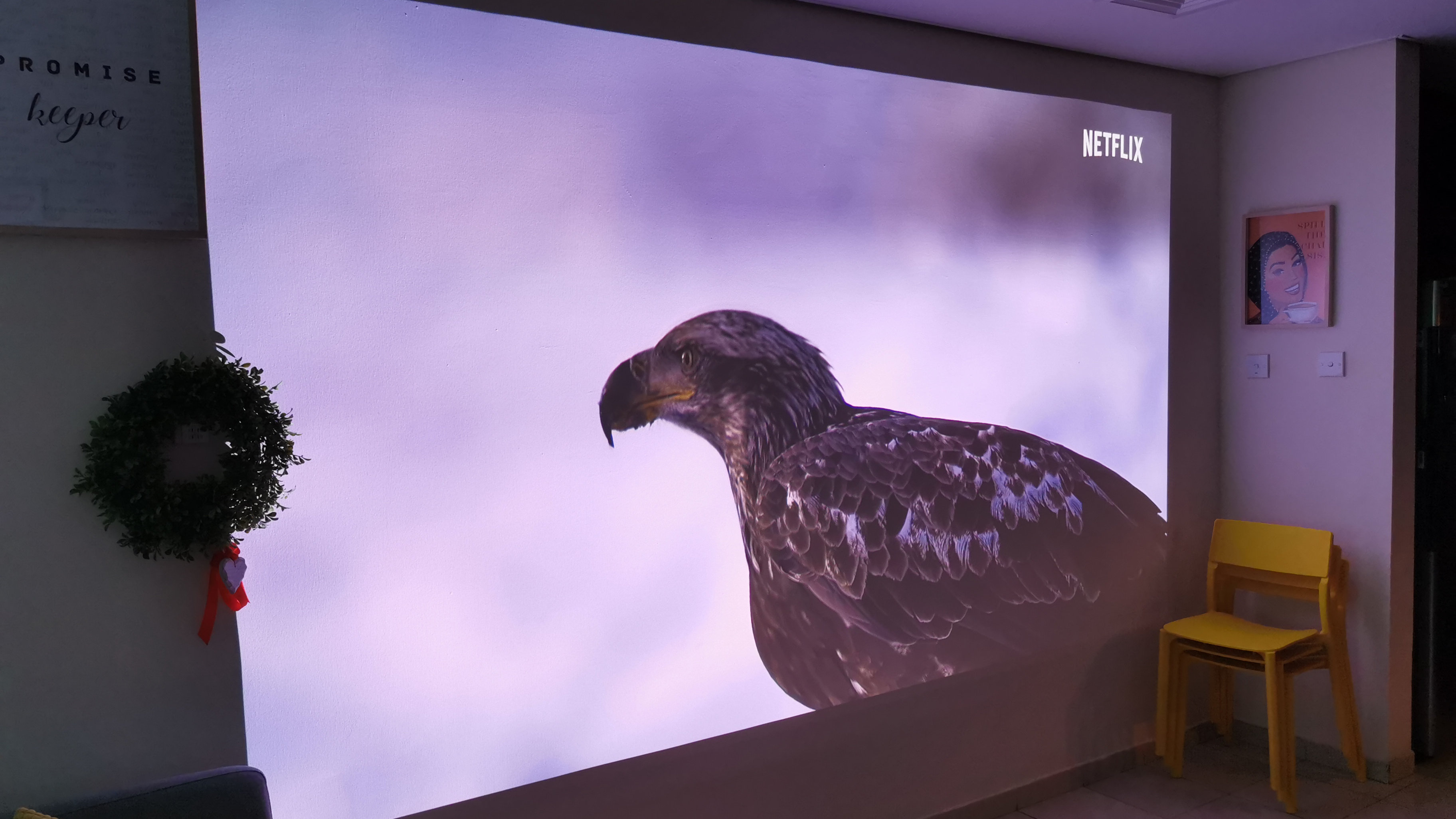
To properly experience what the LTV-3500 can do, we ran it through a gamut of viewing scenarios to see how it would hold up. As mentioned before, this projector is bright, and the image can be clearly seen even in well-lit rooms with sunlight streaming in. Of course, colors on a blank wall will appear a little fainter, but you can still watch content without too much of a struggle. With the curtains closed, image quality did of course improve considerably, while the LTV-3500 performed the best in the evenings or when the room wasn’t too brightly lit. Even with a secondary light turned on in the kitchen adjacent to the living room, it didn’t affect the projection quality too much, which makes for a great viewing experience.
We did notice that the blacks on the LTV-3500 aren't quite up to the mark, even when paired with a competent projection screen. Watching a copy of Dune with its harsh desert scenes was impressive, but when the scenes changed to a night ambush, the projector struggled slightly to showcase finer details in the image, and characters blended in with the dark background rather than standing out.
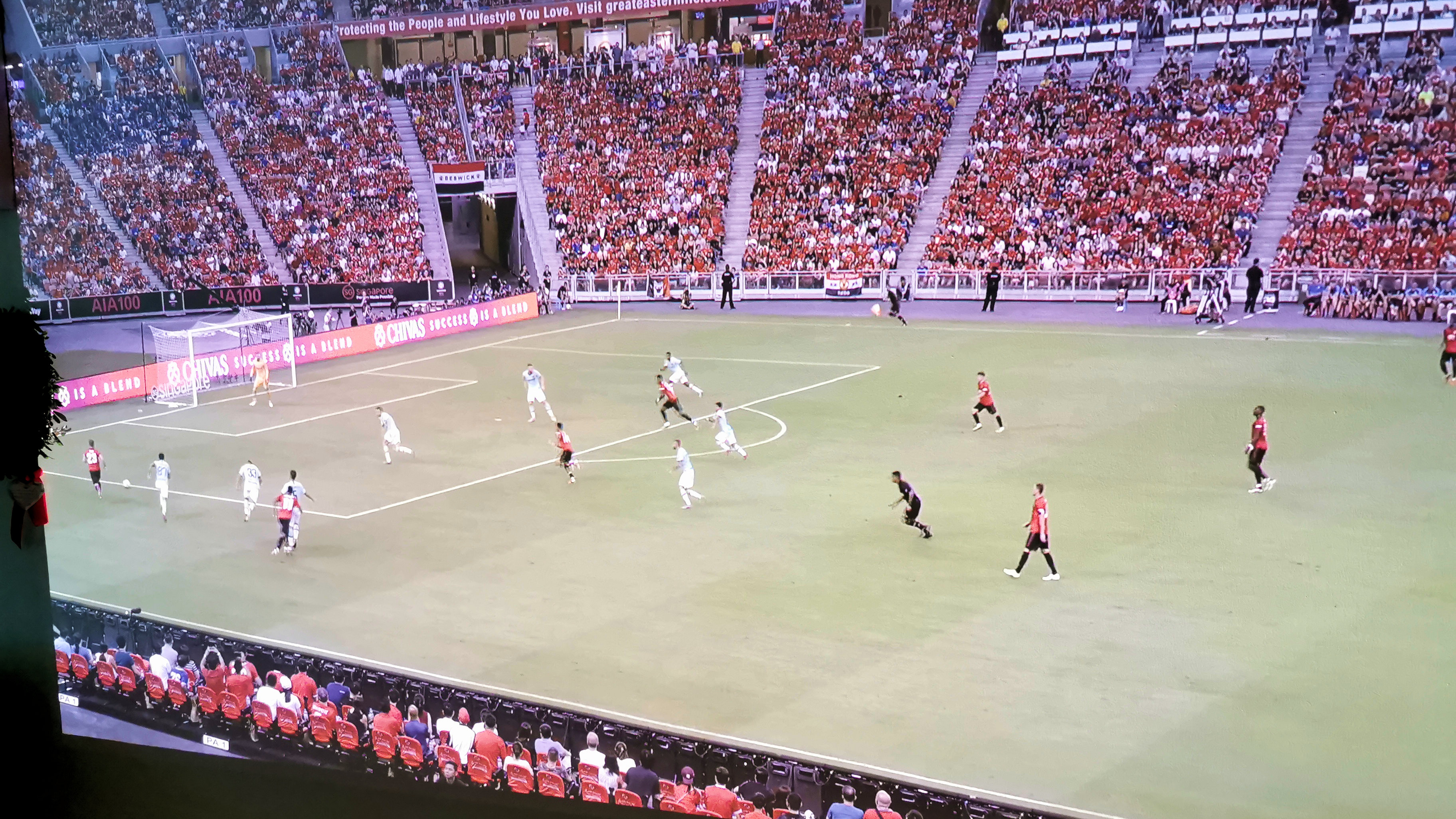
Watching Netflix and YouTube on the LTV-3500 was fantastic, with brilliant colors and a truly immersive image showing up on our projection wall. Forest imagery was bright and vibrant, and videos of a food market in Taiwan made us want to immediately order some takeout. The projector also supports the Motion Estimation Motion Compensation (MEMC) feature, which thankfully does not add too much of a ‘soap opera effect’ to visuals. You can adjust the amount of MEMC you want or turn it off entirely – we left it at Medium settings for most of our viewing. Watching football matches was also fantastic, and the projector had no trouble keeping up with the fast-paced action.
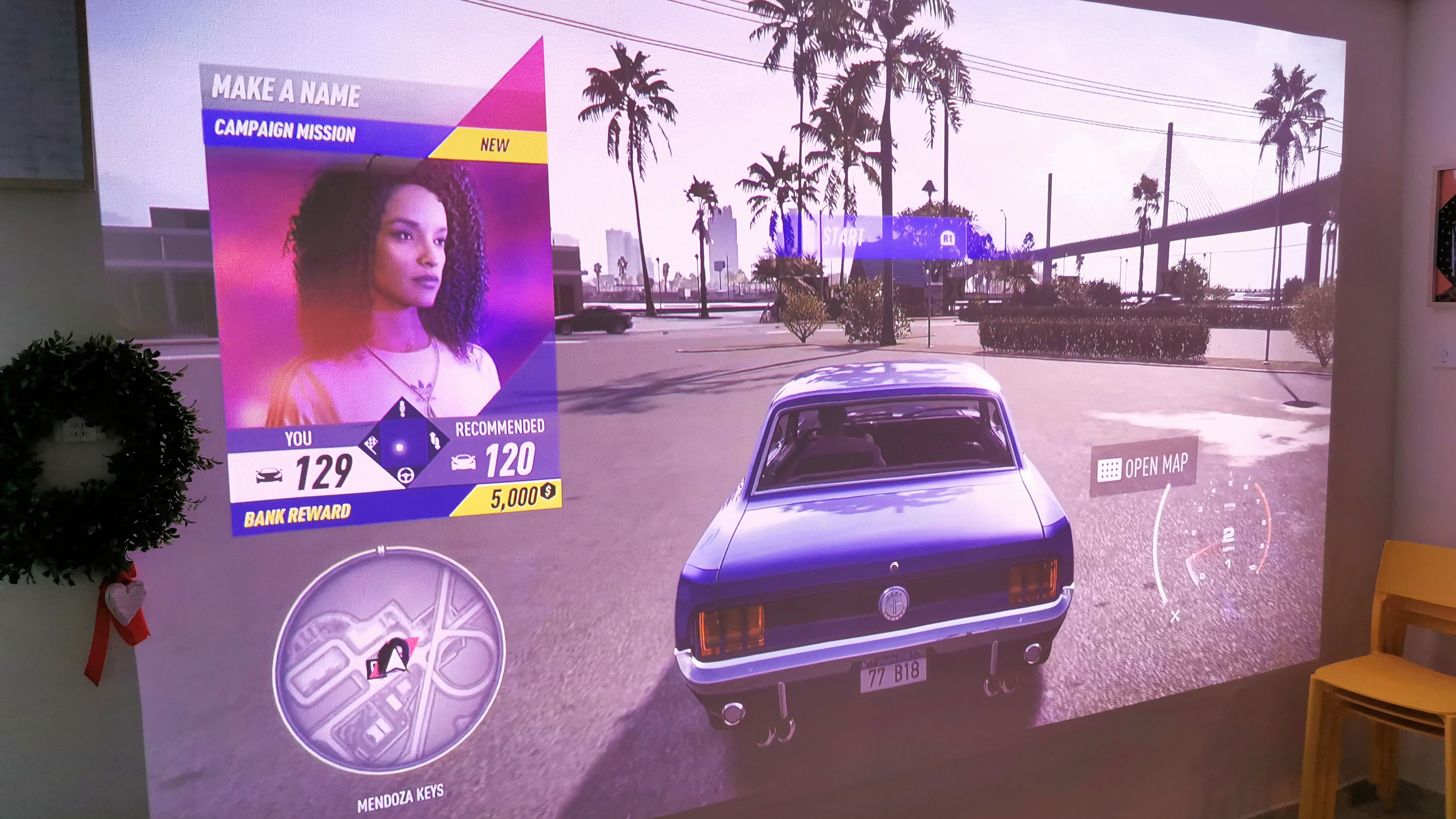
Gaming on the LTV-3500 will rely heavily on what exactly you’re connecting to it. We connected a gaming PC powered by an RTX 3070Ti and were able to comfortably play games at 1080p, but were of course restricted to 4k at 60Hz. Games like DOTA2 and God of War worked great, with colors looking bright and the vast snowy landscapes of God of War coming to life right on our wall.
With a PS5 connected, we saw pretty good results as well, with HDR fully supported at 4k. Astro’s Playroom looked great and felt responsive but switching over to the frantic Devil May Cry 5 felt slightly sluggish. Awol rates the input lag of the LTV-3500 as 30ms, so it felt like some of our button presses weren’t translating quickly enough to the game, often breaking our attack combos. First person games like Destiny 2 and Call of Duty Warzone faced similar issues with targeting enemy players, so we don’t recommend you game on the LTV-3500 with games that require fast reflexes. Platformers and racing sims like Forza will certainly get a kick out of this projector, and it was fantastic to experience the brightly colored levels of Mario Kart as well.
There does seem to be a bit of a slight bug that might cause problems with other devices connected via HDMI. The projector has a ‘default source’ option it switches to when turning on, which by default is set to HDMI 1 where the streaming stick is. With this default source enabled and a streaming stick installed, we ran into countless issues with connectivity on the other two HDMI ports, mainly our PS5 and Xbox Series S refusing to display an image on HDMI 2.0, and our Nintendo Switch not displaying any image at all, no matter what we tried.
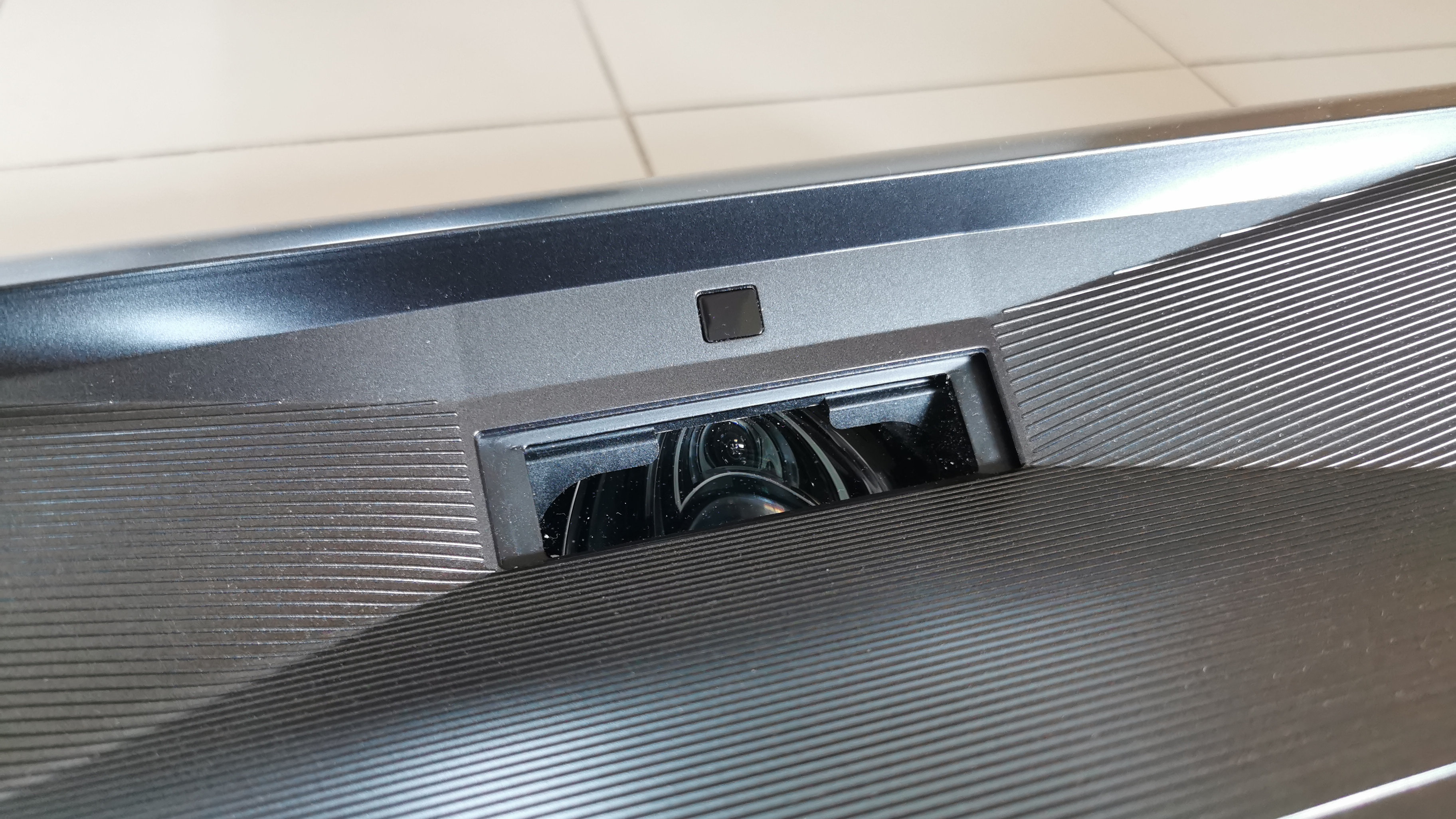
When we changed the default source to the projector’s home screen instead, the problems completely disappeared. We also found that the LTV-3500 was a bit picky when it came to HDMI cables – some of our cables caused flickering and image stuttering when connected, even though they were perfectly reliable on other display devices. If you’re running into similar issues, make sure you check your cables again and turn off the default video source, just to be sure.
The other thing we would heavily recommend is to invest in a projector screen. Whether you opt for the ones that Awol is selling or another third-party one, you’ll definitely appreciate the improvement in image quality when this projector is being used with a screen rather than just projecting on a blank wall.
The LTV-3500 can project a screen size from 80 to 150 inches, but we found that going past the 120-inch mark made it a bit more challenging to get a sharp enough image. We found the best image size to actually be at 100 inches during our tests, and would recommend that you keep it at this size as well.
Audio
You can choose to have either Dolby Atmos or DTS Virtual X running on the LTV-3500, or leave them turned off. By default, they’re turned off, and the LTV-3500 is certainly loud enough to rival a small soundbar. But loudness doesn’t equate to quality, and you’ll find that vocals and mids are drowned out by the heavy bass.
Switching on Dolby Atmos or DTS Virtual X makes the audio a lot cleaner, and you can clearly hear dialogues. There’s no sort of spatial awareness to the audio though – it all just feels like it’s coming straight at you, so for a more enjoyable viewing experience you’ll want to connect the LTV-3500 to a more fitting sound system. The eARC support on one of the HDMI ports is going to be welcomed by audio enthusiasts, which makes it easier to connect the projector to larger, dedicated home theatre setups.
The projector is also very quiet during operation, measuring about 38dB of audio noise when standing right next to it. That’s low enough to be easily covered by ambient room noise and becomes barely noticeable when you’re sitting far away from the projector on your couch.
Buy it if…
You want to impress
The sheer projection size, brightness, and colorful capabilities of the LTV-3500 is something that will impress wherever you set it up.
You want a cinema experience at home
Whether you’re watching movies, sports, or browsing YouTube, the LTV-3500 can handle it all, offering a fantastic and sharp picture every time.
Don’t buy it if…
You’re not going to also buy a screen
The LTV-3500 will work best with a projector screen to really bring out its color and brightness, which can add a significant cost to an already expensive product.
You don’t have an existing streaming device
The Android experience on the LTV-3500 is quite poor, so you’ll only benefit if you connect an existing streaming device such as a Chromecast or Amazon Fire TV.
You’re on a budget
The price tag for the LTV-3500 is certainly something you’ll have to save up for, so if it’s beyond your means, you might have to go with other UST projectors in the market with less projection capabilities.
A former IT & Marketing Manager turned full time Editor, Nick enjoys reviewing PC components, 3D Printers, projectors, and anything shiny and expensive. He can also be found baking up a storm in the kitchen, which we are more than happy to encourage.
